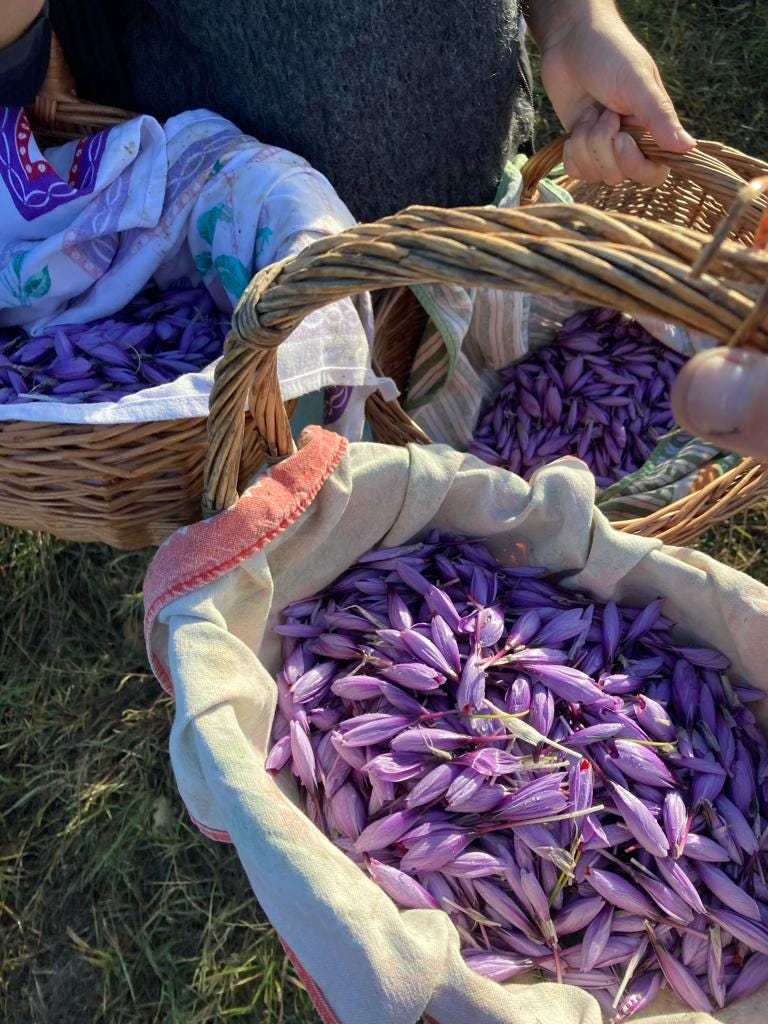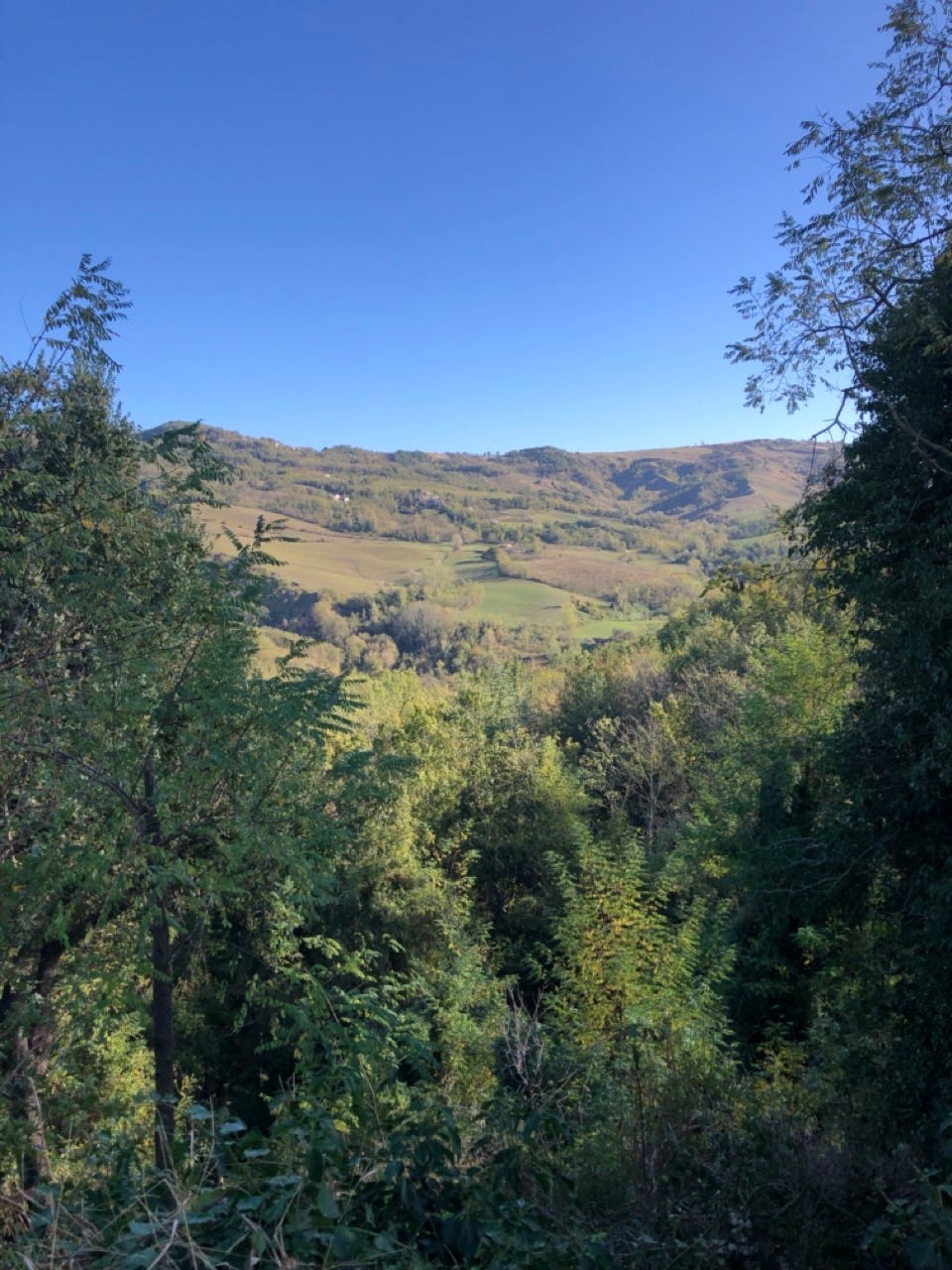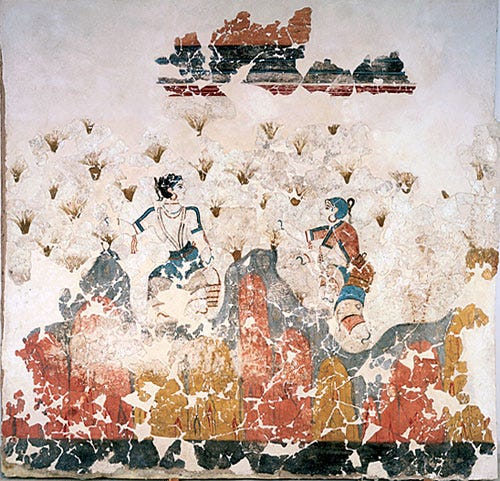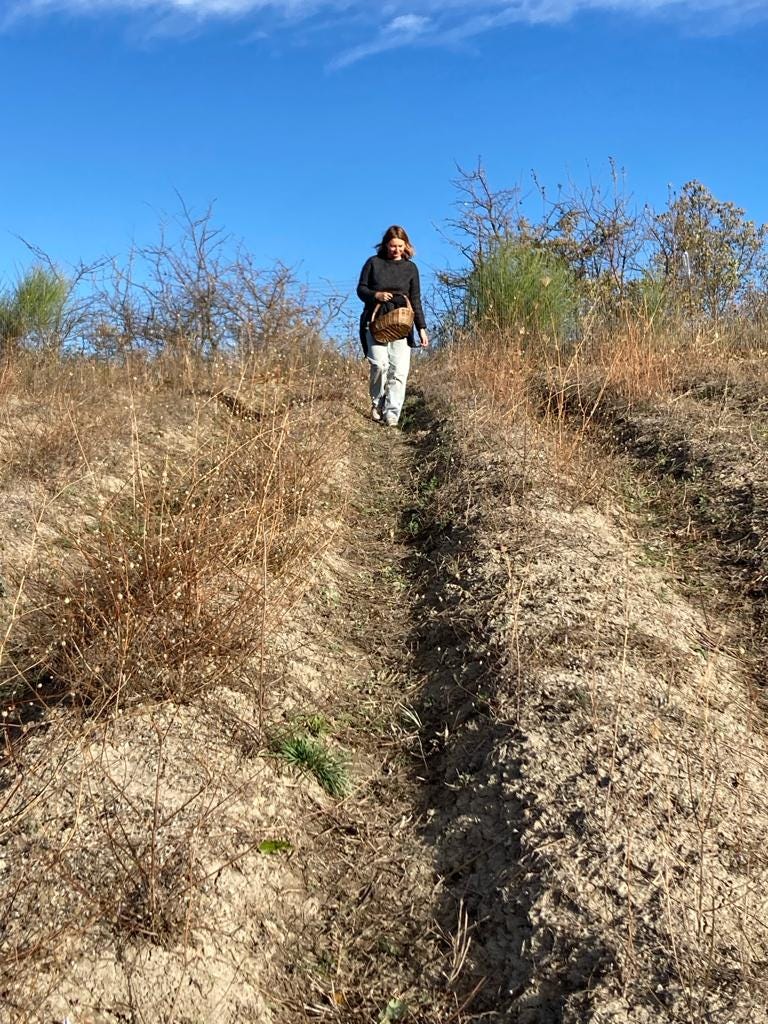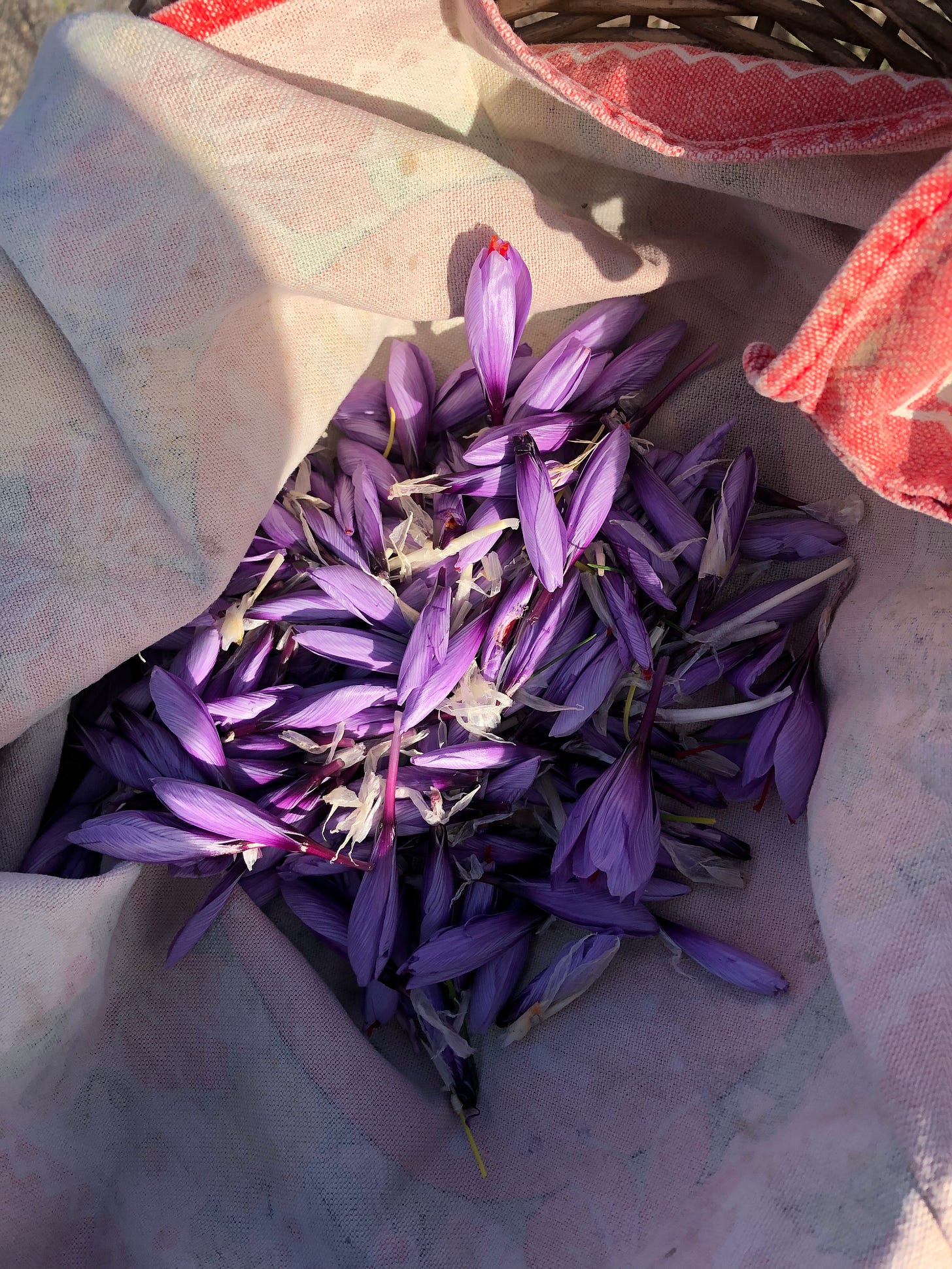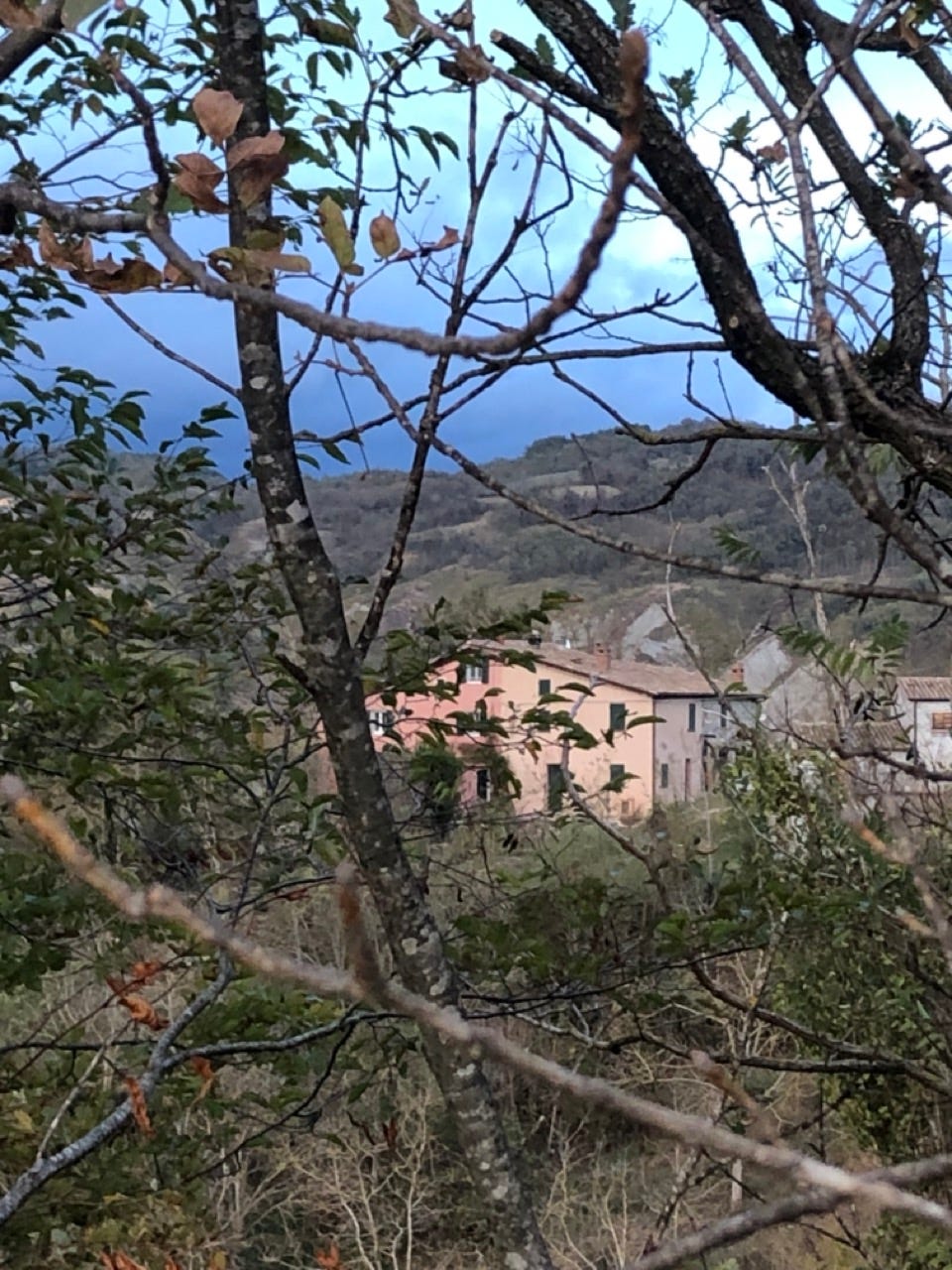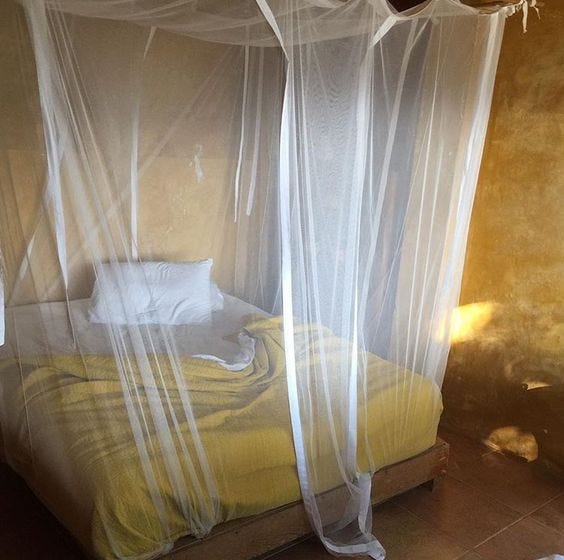The transitional time of winter becoming spring is marked by a number of things here in my corner of the world. The longer days, the cherry blossoms, and the vibrant purple crocuses that seemingly pop up overnight. Seeing them, I am reminded of my time spent in rural Italy this past fall working on a saffron farm. The crocuses we have growing on Vancouver Island are a different variety from the famed spice, Crocus sativus, but look so similar - easter egg purple with crimson red threads on the inside. Saffron as a herb has a real solar energy to it. It’s energizing and bright, just like the first day of warm sun after a long winter. We’re not out of the woods just yet here, but spring is on it’s way and saffron is a beautiful herb to cultivate those sunny feelings.
I have always loved the idea of a farm-stay, like woofing or workaway. When I was 18, on my first trip abroad, I tried my hand at it in Greece. The fact that it took me off the beaten backpacking track to an incredible rural community was thrilling, but the experience itself was hardly tolerable. I came away from it with mouse infested luggage and a close call with an arranged marriage to the Romanian farmhand. Yikes. But when I found myself back in Europe this past fall, ten years later, I decided that I wanted to give this method of travel another go. We were in Italy, heading northwards after an olive harvesting gig in Sicily. I found a host looking for help on her saffron farm in a part of Italy I knew nothing about, Emilia Romagna, which I soon discovered to be possibly the most beautiful part of the country.
To me, saffron, or Zafferano in Italian, is a mystical herb. Maybe that has something to do with the cost of it, as it’s the most expensive herb on earth, so it always feels like treasure when I’m in possession of it. It’s also one of our most ancient herbs, with pigments being found in 50,000 year old depictions of prehistoric places in Iran. Drawings dating back to 1700 BCE were found the Minos Palace in Crete, showing people picking saffron. All that is to say, saffron has been hugely significant to humans throughout history. It’s up for debate where this plant originates from, but it seems likely to have been around the Mediterranean. Nowadays, Iran produces the vast majority of the world’s saffron. I always wondered why saffron has such a high price tag, but after spending two weeks harvesting it I get it! From each crocus, you collect the stigma, three filaments aka saffron threads, that are then dried and ready to be weighed and packaged. This means you have to pick a lot of flowers to end up with a substantial amount of saffron. Luckily, I found the work incredibly peaceful and meditative.
We would head out around 7:30 each morning to walk the ten minute journey to the saffron field. It was November, and the air was crisp. I loved this groggy walk to the field, with my harvesting basket in hand, largely in part due to the panoramic views of rolling hills we had on all sides. Once at the field we would assess what our work load would be for the day, as each morning brought a different amount of new blooms, so it was always a surprise. The work then was quiet and contemplative. Walking up and down the rows, picking flowers and keeping count in our minds. Once done, we’d head back to the house where we would sit at the kitchen table and separate the threads of saffron from the petals. It was monotonous but like a moving meditation. By the end I felt hypnotized by the practice and totally lost in the world of saffron. I was ready to drop everything and live out my days as a saffron farmer, but in reality the harvest only lasts for a few weeks each year so this period of zen would be short lived.
Okay before I get too far down memory lane let’s talk about saffron in terms of herbal medicine. It seems that there is nothing that this herb can’t do. If I won the lottery I’d be consuming it daily, and after writing this I know that I will start using my supply a little more freely because it is just too good not to. It’s medicinal uses span cultures and are referenced in the likes of Unani Tibb, Traditional Persian Medicine, Ayurveda, and TCM, just to name a few. Traditionally, it has been used as an exhilerant, meaning it uplifts the spirits and brings about a sense of joy and euphoria. Because of this, saffron has undergone a lot of clinical research to determine its efficiency at treating anxiety and depression, and the results of these trials are promising! Grief, heartache, sadness, and a loss of a zest for life all are conditions that call for saffron. It is a popular treatment for cases of PMDD and postpartum depression. Speaking of childbirth, ancient Islamic medicine supports the use of saffron, rose water and sugar taken orally to accelerate, or induce, labour. Sounds like a divine treat.
The Romans added it to wine to prevent hangovers, in Unani medicine it was used to treat urinary and kidney infections, and in Ayurvedic medicine it is often applied externally for skin conditions. If you’re feeling reeaaally luxurious try taking a saffron milk bath, like Cleopatra supposedly would do. Saffron is also labelled as an aphrodisiac, so what’s not to love?
I like to crush up one or two strands and make an overnight infusion to drink chilled the next day. Just this simple “saffron water” feels like a cup of liquid sunshine. It’s also classically added to rice when cooking to give off its delicate aroma and colour. Saffron milk is also a delicious and soothing drink (with honey and maybe some cardamon and rose!). The nice thing about saffron is that it’s incredibly potent, so a little goes a long way.
I love taking a herb that is typically thought of as strictly culinary and studying its medicinal uses. It’s such a nice way to reframe how we think of the foods we eat, too. As they say, let thy food be thy medicine.
p.s. I always think of this Joni Mitchell song when I see the first crocuses of the year. Ok, herbal hunnies, that’s all for now. Be well :)





